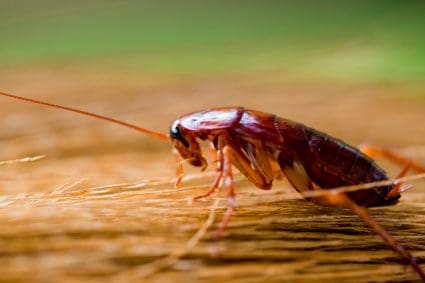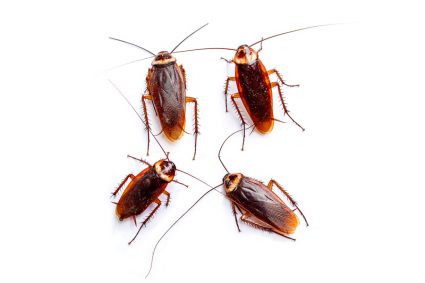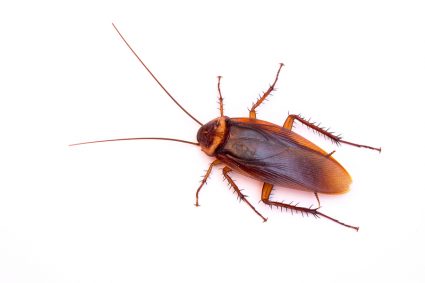
Removing a creepy spider from the ceiling may not be everyone’s cup of tea, including myself, even though I have been a pest control expert for years.
I find spiders terrifying, so my reaction to seeing one in our living room ceiling wasn’t pretty.
Although I wanted it out of the house, I did not want to harm the animal.
Luckily, I have some experience with catching spiders and safely releasing them.
I used a glass jar and folded paper to catch the animal.
However, since I’m not a big fan of spiders and getting that close to them, I started looking for alternatives to deal with encounters with spiders.
My research revealed an excellent alternative, using a bug-catching device.
The simplest way to catch a spider on the ceiling is to use an open jar and a folded piece of paper to carefully trap it inside the jar, with the paper acting as a slidable lid.
Using a bug-catching device is also a convenient and less scary option for those such as myself who are terrified of spiders.
Let’s learn how to safely catch and release spiders and ways to stop them from returning.
Trap the Spider Inside a Jar
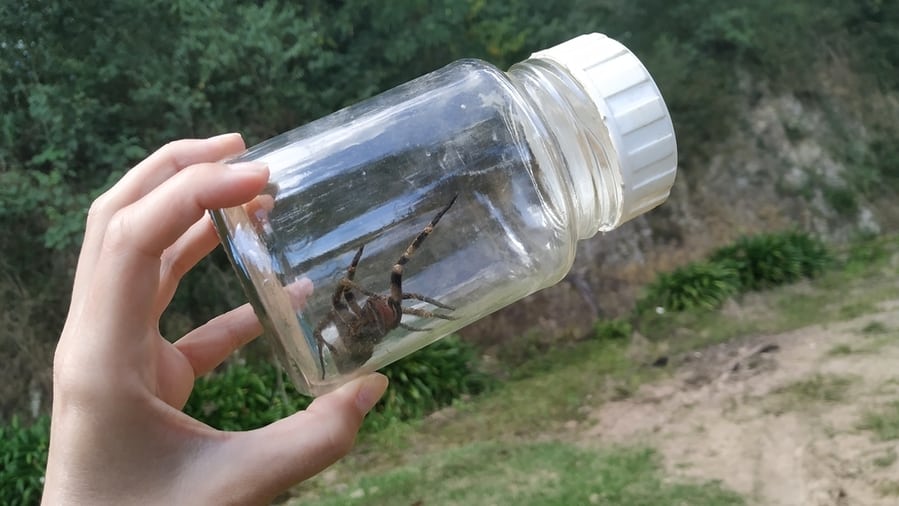
This is one of the easiest ways to catch spiders and other animals that are either repulsive or poisonous. There are two ways to use this method.
The most popular method is to use a lidless jar and a folded piece of paper.
The other way is by using a jar and its lid. However, there is a chance for the spider to escape while you are placing the cap. It also requires more confidence and quick action.
As a result, most people prefer using a lidless jar with a folded piece of paper as a makeshift lid.
A transparent jar is recommended since it shows where the spider is and its movements once trapped.
The folded paper should be bigger than the jar’s opening to ensure that the latter is entirely closed.
1. Get Everything Ready

Prepare the area for safely catching the spider by placing something secure to climb on.
It’s a good idea to be mindful of hazards in the area if things go south with the spider trying to make a run for it before the jar is closed.
Also, have the jar and the folded paper within easy reach.
2. Trap the Spider

Slowly place the jar’s opening on the ceiling, ensuring it has nowhere to run.
Keep calm if the spider tries to escape. Hold the jar in place and give the spider a moment to settle down.
Wait until the spider settles down in the bottom of the jar or a spot away from the jar’s opening.
Moving the jar while holding it against the ceiling is also an excellent way to force the spider to a preferable position.
3. Close the Mouth of the Jar

Once the spider is settled in a safe location in the jar, gently slide the folded paper between the ceiling and the jar without creating a gap big enough to escape.
Make sure that the folded paper completely closes the jar’s mouth.
4. Bring Down the Entire Trap Together

The spider should be securely trapped in the jar with the folded paper as a lid. Slowly bring both items down without separating or dropping them.
Place a palm on top of the piece of paper as soon as there is enough space between the ceiling and the paper.
5. Safely Release the Spider

Take the trapped spider outside and release it into a bush or grass. I usually release spiders into shrubbery further away in the yard, making them less likely to return inside.
Use a Handheld Bug Catcher
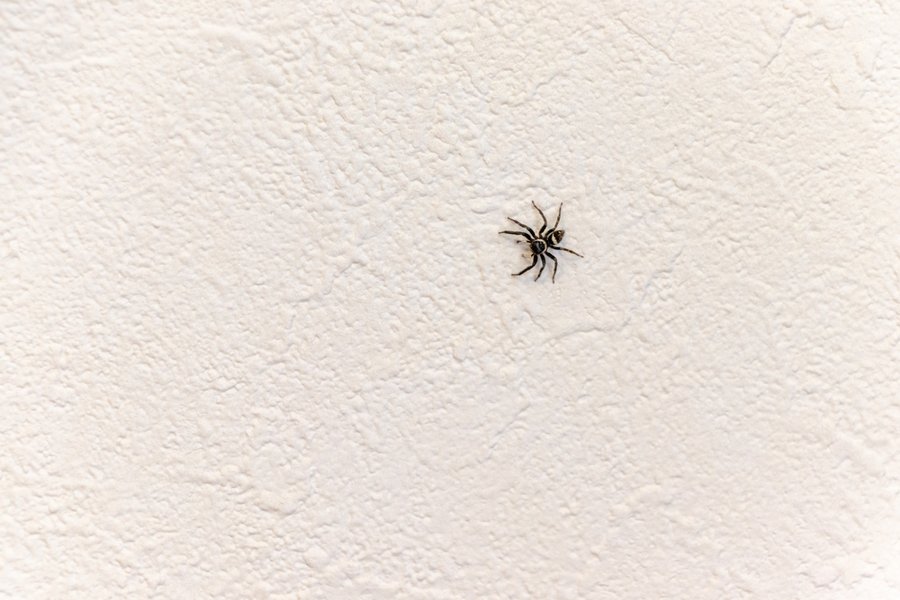
Using a jar to catch a spider is a brilliant idea since we didn’t have any other way to remove it without harming it.
Using a bug-catching device is an excellent option for those who prefer to keep more distance from the spider than catching it with a jar.
The contraptions designed to safely catch and release insects usually feature trap doors, bristle tips, and long handles.
Handheld bug catchers are inexpensive and usually available at home improvement or gardening stores. They mimic the jar and paper method with their hollow chambers keeping the spider trapped.
Additionally, they are safer, more convenient, and require less skill and bravery.
Start by positioning the catching end of the device over the spider without spooking it.
Once the spider is close enough, carefully trap it by pressing the trigger. Take the device outside and release it using the trigger mechanism again.
Leaving spider webs around increases the likelihood of their owners returning to the same spots. Therefore, it’s vital to remove spider webs after catching and relocating spiders.
Furthermore, periodically inspecting the house for spider webs and removing any spiders and their webs are excellent ways to reduce the chances of getting spooked out by spiders or dealing with spider infestations.
Summary
Spotting a spider on the ceiling can spook out many people. It can quickly become a headache for those who prefer not to kill or harm animals.
Fortunately, I knew how to safely catch and release crawling insects using a jar and paper.
My research later revealed that using bug-catching contraptions is an excellent way to catch spiders, encouraging me to invest in one. I have used it several times to remove spiders from our home and find it highly suitable for those fearful of spiders.
Frequently Asked Questions
Should I Leave the Spider on My Ceiling Alone?
Having a spider or two in a house is beneficial since they help control many pests, including flies, mosquitos, and moths. Leaving them alone also does not pose a danger to humans since spider bites are scarce.
Therefore, letting a few spiders coexist in a household is okay as long as they don’t turn into an infestation and the residents are comfortable with it.
How Do You Remove a Spider From the Ceiling Without Killing It?
Use a jar and folded paper to carefully trap the spider inside the jar and release it outside. Investing in a handheld bug-catching device is also an excellent idea since it helps catch spiders easily without killing them.

